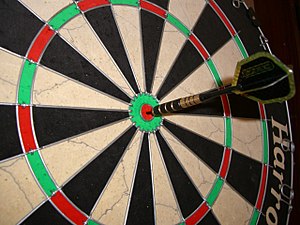 Image by ASurroca via Flickr
Image by ASurroca via Flickr
Nick and I really want to just dive in. We have some pretty large goals and a small time frame to achieve them in, but we are eager and ready to learn. I attended a seminar recently that basically gave me the step-by-step guide on how to find, buy, and close on a property. Having taken that seminar I wanted to run out and start buying, in fact, we were encouraged to; but I knew there were still things I needed to do.
Originally I had seminars scheduled about every 2 weeks in different cities for the next 3 months. I wanted to run out, learn, and apply. Since then, I have learned another valuable lesson; you need to walk before you leap. My real estate coach has been walking me and Nick through the different things we need to do before we jump out into the market. For example: we need to set up our current finances and come up with a debt elimination plan, we need to reschedule our time so we can learn more, we need to set up our real estate team, we need to do market research, we need to go over our funding options, we need to network and get a pool of investors going, and...you get the idea. It's like our coach said, if you are going to build a house you don't just run out and start pouring the foundation, you need to do a lot of planning first.
As a result of this small lesson I changed my plans. Now I plan to attend a seminar every 4-6 weeks to allow myself time to actually apply what was learned in that seminar before moving onto the next one. This way is much more beneficial since I will retain more information once I give myself time to put it into practice. Once I've mastered many different real estate strategies I can dovetail a lot better (dovetailing is when you use more than once strategy in any given real estate deal such as: buy wholesale, get creative financing, rehab the property, then lease option it out =4 strategies).
So, Nick and I won't be running out to purchase multi-million dollar apartment buildings right away like we really want to, but we will get started on the right foot and have a sturdy foundation to build on. Once we do get everything in order, watch out world, we're going to invest like crazy!
![Reblog this post [with Zemanta]](http://img.zemanta.com/reblog_e.png?x-id=4a43f74d-0f44-4bb5-8079-961c86029ca3)

![Reblog this post [with Zemanta]](http://img.zemanta.com/reblog_e.png?x-id=e3fc2252-bcd7-4756-aa58-942cfd90738f)


![Reblog this post [with Zemanta]](http://img.zemanta.com/reblog_e.png?x-id=0bb2baf6-8058-4308-924f-6457d61670b2)

![Reblog this post [with Zemanta]](http://img.zemanta.com/reblog_e.png?x-id=6db3f444-1907-4af5-8e0c-3e7890ba3b87)

![Reblog this post [with Zemanta]](http://img.zemanta.com/reblog_b.png?x-id=f721c157-4d9a-43ec-85ce-8d1f2839e410)




![Reblog this post [with Zemanta]](http://img.zemanta.com/reblog_e.png?x-id=a526434b-d84a-494d-8be2-9659f1573eb1)

![Reblog this post [with Zemanta]](http://img.zemanta.com/reblog_e.png?x-id=9f251d0c-e572-4842-8396-b4678f68bf49)

![Reblog this post [with Zemanta]](http://img.zemanta.com/reblog_e.png?x-id=2ffe2952-32e7-47dd-8e6d-ff128d2bcea2)

![Reblog this post [with Zemanta]](http://img.zemanta.com/reblog_e.png?x-id=4f35ff7a-7ba4-4361-9142-0dcb65a1ee4a)

![Reblog this post [with Zemanta]](http://img.zemanta.com/reblog_e.png?x-id=f8d1a881-1555-4415-9a30-45a49ce2a027)



